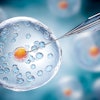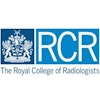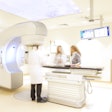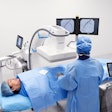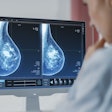
SAN ANTONIO, (Reuters Health), Dec 12 - Joint pain is more common and more severe in women with breast cancer than in age-matched controls without breast cancer, researchers reported at the 2008 San Antonio Breast Cancer Symposium (SABCS).
Dr. Deborah Fenlon, with the University of Southampton, U.K., and colleagues analyzed responses to questionnaires completed by 247 women with breast cancer following primary breast cancer treatment and 272 women without breast cancer undergoing routine mammography. The mean time since diagnosis in the breast cancer group was 36 months.
"Cancer detection and treatment are improving, and presently almost two-thirds of newly diagnosed patients are likely to survive for at least 20 years," Fenlon, a senior research fellow at the Macmillan Research Unit, observed. As a result, "more women are living with the long-term sequelae of breast cancer treatment."
While joint and muscle aches, pains, and stiffness are among the more common complaints in women treated for breast cancer, the present study is the first to compare the prevalence and patterns of these symptoms to those in women of a similar age without cancer, she said.
Participants in the trial completed three widely validated pain questionnaires: the Nordic musculoskeletal pain questionnaire, the Brief Pain Inventory (BPI), and the SF-36 general health questionnaire.
The researchers also obtained medical and demographic data, as well as information about factors that might contribute to the symptoms, such as menopausal status and weight.
Overall, 61.9% of breast cancer patients complained of pain on the day they were questioned versus 49.4% of women without cancer. Current pain was significantly worse in the breast cancer group, with a mean score of 4.2 on the 10-point BPI scale compared to 3.4 in women without breast cancer.
In addition, 41% of breast cancer patients reported pain in their hands and 21% reported pain in their upper back over the last seven days versus 31% and 11%, respectively, of patients without cancer.
Current neck pain was more common in noncancer patients (37% of noncancer versus 28% of cancer patients). Fenlon said that while further research is needed to explain why this occurred, it may be that breast cancer patients perceive pain as being less important "relative to a breast cancer diagnosis."
Results also showed that pain in the hands and upper back significantly affected women's activities in the last 12 months. Although pain in the feet was not reported as more common in breast cancer patients, it was more likely to affect activity in the last 12 months.
Based on the findings, Fenlon urged clinicians not to underestimate the extent and impact of joint pain as a result of treatment for breast cancer, because joint pain may disrupt patients' lives for years after treatment has stopped. Oncologists, she added, should consider early referral of patients who report joint pain to a rheumatologist.
By Jill Stein
Last Updated: 2008-12-12 13:31:23 -0400 (Reuters Health)
Related Reading
Breast cancer pain not controlled as well in nonwhites, November 26, 2007
Copyright © 2008 Reuters Limited. All rights reserved. Republication or redistribution of Reuters content, including by framing or similar means, is expressly prohibited without the prior written consent of Reuters. Reuters shall not be liable for any errors or delays in the content, or for any actions taken in reliance thereon. Reuters and the Reuters sphere logo are registered trademarks and trademarks of the Reuters group of companies around the world.
